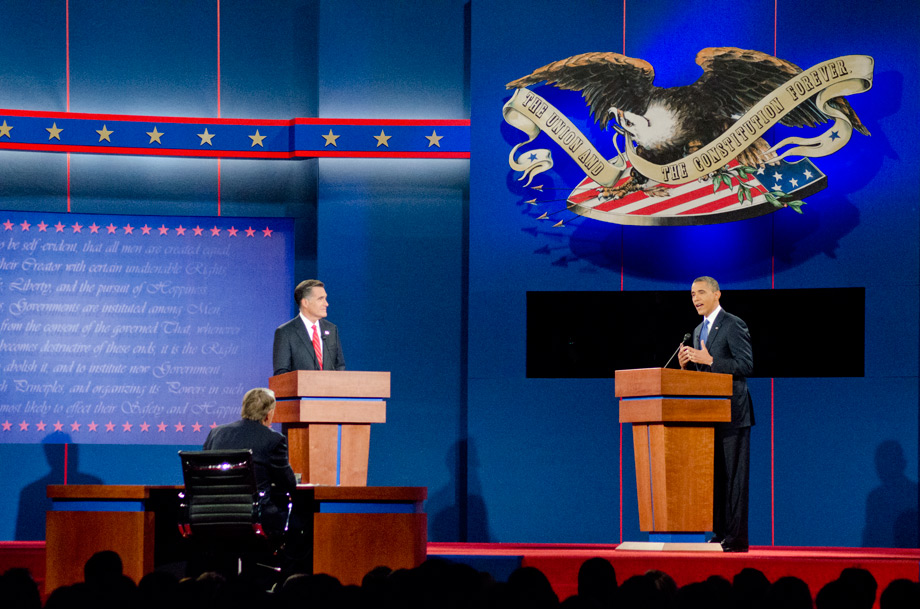|
By Eric M. Appleman/Democracy in Action
Former Gov. Mitt Romney delivered an
animated performance
at the first presidential debate Wednesday night in Denver, giving a
significant boost to his prospects in November, while
President Barack Obama disappointed many of his supporters with a
lackluster presentation.
With little more than a month to go until Election Day, and voters in
some states already taking advantage of early voting, both candidates
are seeking to appeal to the remaining undecided voters.
Although some have derided the presidential debates as scripted
affairs,
and questioned whether or not they even matter, this one clearly
did. Going into the debate Romney's campaign appeared to be in a
downward
trajectory. He endured a difficult month of September,
to the point that some observers were starting to think the race was
all but over. Romney's convention speech at the end of August was
almost upstaged by actor
Clint Eastwood talking to a chair. President Obama meanwhile
achieved a
convention bounce, and by the end of September polls showed Romney
trailing by small margins in most of the swing states. On Sept.
16 Politico reported on
tension in the campaign ("Inside the campaign: How Mitt Romney
stumbled"). On Sept. 17 a secretly made video of Romney at
fundraiser speaking dismissively of
the "47 percent" dealt his campaign a significant blow. In her
Sept. 18 column in the Wall Street
Journal ("Time for an Intervention"), columnist Peggy Noonan
wrote of "a broad and growing feeling now, among Republicans, that this
thing is slipping out of Romney’s hands."
Pre-debate expectation-setting (1, 2, 3, 4[PDF]) suggested that
Romney would
benefit from having participated in, and done fairly well in, 19
debates during the
primary season. He also did extensive practice over the past
month, including debate camp in Vermont in early September. Obama
held a number of practice sessions, but his presidential
responsibilities and outlook may have made it more difficult for him to
get in the right mindset than for the full-time candidate Romney.
On the stage at Magness Arena at the University of Denver, Romney
appeared comfortable, he opened with some humor, and he was assertive,
challenging moderator Jim Lehrer. Post-debate commentary and the
next day's headlines (seizing the offense, taking the fight to
Obama, battering Bam...) widely presented Romney as the winner.
The Denver debate shelved the
"Romney in trouble" narrative, at least for a while.
This was the first
debate in which the CPD used a format with defined segments. The
objective was to focus more time on big issues (+).
Moderator Jim Lehrer seemed to struggle to rein in the candidates,
particularly Romney, at times (1, 2). Whether the format made for a
more informative evening is open to debate, but viewership was solid;
the debate drew an audience of 67.2 million according to Nielsen.
Twitter reported that "there were more than 10 million Tweets this
evening, making this first of the
2012 presidential debates the most tweeted-about event in U.S.
politics." (+)
Notes
Even the Obama spinners had trouble after the debate; as the spinning
session
progressed into the evening many of them abandoned the space, leaving
it mostly occupied by Romney advocates.
Barry Blitt's illustration on the cover of the Oct. 15 issue of New Yorker magazine presented a
clever view of Obama's performance: Blitt portrayed the
debate stage with Romney debating an empty chair.
|
|
|
|


